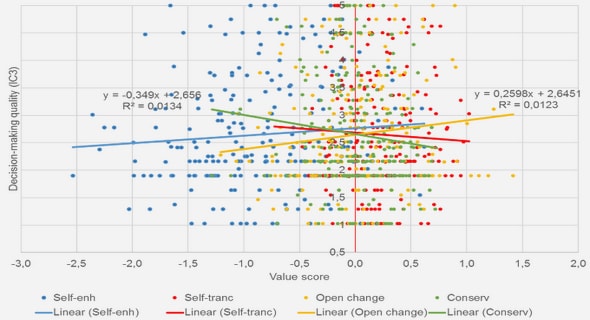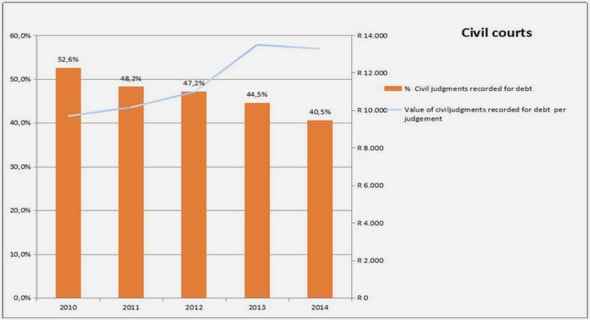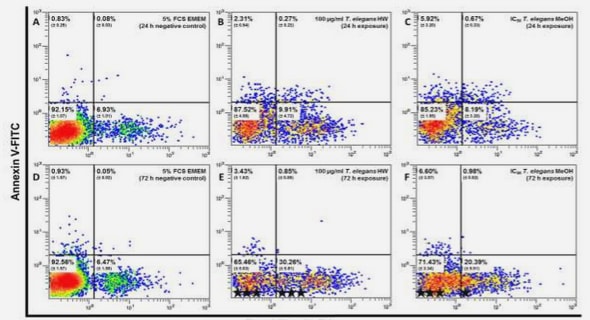Get Complete Project Material File(s) Now! »
Principles of the Riverstrahler model
The SENEQUE/Riverstrahler model (Billen et al., 1994; Billen and Garnier, 1999; Garnier et al., 1999) is a biogeochemical model (RIVE) of in-stream processes imbedded within a GIS interface (SENEQUE), providing a generic model of the biogeochemical functioning of whole river systems (from 10 to > 100000 km2), designed to calculate the seasonal and spatial variations of water quality (Ruelland et al., 2007; Thieu et al., 2009).
The basic version of RIVE involves 29 variables describing the physicochemical and ecological state of the system (Fig 2.6).
These include nutrient, oxygen, suspended matter, dissolved and particulate nonliving organic carbon concentrations, and algal, bacterial and zooplankton biomasses. Most of the processes that are important in the transformation, elimination and/or immobilization of nutrients during their transfer within the network of rivers and streams are explicitly calculated, including algal primary production, aerobic and anaerobic organic matter degradation by planktonic as well as benthic bacteria with coupled oxidant consumption and nutrient remineralisation, nitrification and denitrification, and phosphate reversible adsorption onto suspended matter and subsequent The basic assumption behind the model is that basic biological and physico-chemical Figure 2.6: A schematic representation of the RIVE model of biogeochemical processes in aquatic systems. State variables include: DIA, diatoms; GRA, green algae; ZOO, zooplankton; BAC, heterotrophic bacteria; HD1,2,3, rapidly, slowly and non hydrolysable dissolved organic matter; HP1,2,3, rapidly, slowly and non hydrolysable particulate organic matter; OXY, oxygen; NH4,ammonium; NH4ads, ammonium adsorbed onto the sediment; NO3, nitrate;NIT, nitrifying bacteria; PO4, ortho-phosphate; PIP, particulate inorganic phosphorus; BIP, benthic inorganic phosphorus; Dsi, dissolvedsilica; BSi, biogenic detritic silica; BBSi, benthic biogenic silica;SS, suspended sediments; SED, deposited sediments. (From Thouvenot-Korppoo et al., 2009). processes involved in the functioning of the river system are the same from headwaters to downstream sectors, while the hydrological and morphological constraints controlling their expression differ largely along an upstream–downstream gradient as do the constraints exerted by the inputs of terrigenous material. The model describes the drainage network of the river system as a combination of basins, represented as a regular scheme of confluence of tributaries of increasing stream order, each characterized by mean morphologic properties, connected to branches, represented with a higher spatial resolution. The framework of the drainage network is built as a combination of three kinds of objects (Fig. 2. 7):
– Upstream basins are idealized their complex drainage network structure as a regular scheme of confluence of tributaries of increasing stream-order, its having the same mean morphological characteristics.
– Branches are represented as major rivers, with a spatial resolution of 1 km of the detailed and realistic geographical.
– Reservoirs are represented as mixed reactors, connected either to branches at a defined position or to all stream-order rivers in a basin.
Spatial structure of the Red River as used in this thesis
For the purpose of modelling FIB and organic carbon in the lower tributaries of the Red River, where we have concentrated our measurements, the spatial resolution adopted for running the Riverstrahler model is rather coarse, with a focus on the course of the 3 main branches of the river system (Da, Lo, Thao/Hong), and most of the remaining drainage network represented as idealized basins (Fig 2.10). The two major dams located on the Da and in the Lo basins are taken into account by considering the morphology (increased width and minimum depth) of the corresponding stretches of river. In this representation, our sampling stations correspond to the following kilometric point (pK) of the different branches as indicated in Table 2.6.
Secondary sources of FIB
FIB and the water borne pathogens for which they are an indicator are particularly susceptible to shifts in hydrology and water quality (Vidon et al., 2008b; Cho et al., 2010; Chu et al., 2011). Stormwater discharges are a major cause of rapid deterioration in surface water quality. Storm events increase turbidity, suspended solids, organic matter and faecal contamination in rivers and streams, although the microbiological quality of stormwater varies widely and reflects human activities in the watershed (Ribolzi et al., 2011; Causse et al., 2015; Ekklesia et al., 2015). Geldreich (1991) reported that stormwater in combined sewers can have more than 10-fold higher thermotolerant coliform levels than in separate stormwater sewers.
In rural areas and in urban areas without adequate wastewater treatment or stormflow management, one of the major pathways via which faecal contaminants enter waterways is via overland flow. Overland flow occurs when rainfall is unable to infiltrate the soil surface and runs over the ground, normally in rivulets. Overland flow is also the predominant means by which soil particles and faecal contamination in soils are transported from land to surface waters. The concentrations of FIB in overland flow are controlled by many factors such as rainfall duration and intensity, manure application, faecal deposit age and type, adsorption to soil particles, etc. (Blaustein et al., 2015; Rochelle-Newall et al., 2015).
Many authors have highlighted the low contribution of groundwater to FIB concentrations (Jamieson et al., 2004). These low values are probably as a result of efficient soil filtering of microorganisms in infiltrating water (Matthess et al., 1988), in contrast to overland flow characterized by high FIB concentrations.The values of only 4 E.coli 100 ml-1 found in groundwater of a village in Laosis far lower than the reported values of 230 000 E.coli 100 ml-1 in overland flow during a storm downstream of a small stream (Ribolzi et al., 2011).
Fate in the aquatic continuum
The fate of FIB in the environment is controlled by the bacteria strain characteristics, the indigenous microbial community and by external environmental variables (Rochelle-Newall et al, 2015; Fig. 3.1). This latter group includes sunlight, nutrient and suspended solids concentrations, sedimentation and resuspension rates, water temperature, pH, predation, and organic matter (OM) concentrations. All of which influence the die-off rates and, potentially, the growth characteristics of FIB in the non-host environment.
Although FIB are considered to be enteric bacteria and therefore adapted to a nutrient and organic matter (OM) rich, low oxygen environment in their host there is some evidence that they can persist in the ecosystem and particularly so in tropical soil environments (Byappanahalli and Fujioka, 1998; Winfield and Groisman, 2003; Ishii et al., 2006; Ishii and Sadowsky, 2008). When they are released from the host FIB are in an environment that is colder, more dilute and has higher oxygen concentrations and much lower OM concentrations. The OM chemical quality is probably also very different from that of the host. Fujioka and Byappanahalli (2001) have shown that FIB have the capacity to degrade a series of carbon sources found in soils.
FIB abundance: monthly observation
The ECtot, and TCtot numbers for each season at the ten different stations are shown in Fig. 3.4. The number of TCtot varied between < 100 CFU 100ml-1 at Hoa Binh in January to over 39100 CFU 100ml-1 at Yen Bai in September. During the wet season, TCtot at Yen Bai, the most upstream station, was 9783 ± 14431 (mean ± standard deviation) CFU 100ml-1 as compared to 4383 ± 3797 CFU 100ml-1 for this station during the dry season. For the other upstream tributaries, relatively low mean TCtot numbers were observed during the wet season (1850 ± 715 and 800 ± 789 CFU 100ml-1 for Hoa Binh and Vu Quang, respectively. The highest mean values were found in the downstream delta stations with 6066 ± 4506, 5408 ± 5379 and 6050 ± 5469 CFU 100ml-1 for Nam Dinh, Truc Phuong and Ba Lat, respectively. The overall pattern was similar for the dry season, i.e. higher mean values at Yen Bai and in downstream delta stations such as the peri-urban Nam Dinh station where a seasonal average of 5016 ± 5840 CFU 100ml-1 was found. When the data from all of the stations were combined TCtot exhibited a significant seasonal difference with lower numbers during the dry season as compared to the wet season (Fig. 3.4; p= 0.042).
Table of contents :
1 General Introduction
1.1. Human activities, microbial pathogens and organic carbon
1.1.1 Aims and scientific questions of the thesis
1.1.2 Structure of the thesis
2 Study site and Methods
2.1 Study site
2.1.1 Water resources in Viet Nam
2.1.2 Red River Basin
2.2 Methods
2.2.1 Sampling strategy and laboratory analysis
2.2.2 Seneque/Riverstrahler model
2.2.3 Principles of the Riverstrahler model
3 Faecal indicator bacteria
3.1 Faecal indicator bacteria
3.1.1 Introduction and definition
3.1.2 Primary sources of FIB
3.1.3 Secondary sources of FIB
3.1.4 Fate in the aquatic continuum
3.2 Seasonal variability of faecal indicator bacteria numbers and die-off rates in the Red River basin, North Viet Nam (Article 1)
3.2.1 Abstract
3.2.2 Introduction
3.2.3 Materials and methods
3.2.4 Results
3.2.5 Discussion
3.2.6 Conclusions
3.3 Modeling of Faecal Indicator Bacteria (FIB) in the Red River basin, North Viet Nam (Article 2):
3.3.1 Abstract
3.3.2 Introduction
3.3.3 Material and methods
3.3.4 Results and discussion
3.3.5 Conclusions
4 Organic carbon
4.1 Organic carbon in aquatic systems
4.1.1 Introduction and definition
4.1.2 Sources
4.1.3 Role of climate
4.1.4 Biodegradability of DOC
4.2 Organic carbon transfers in the subtropical Red River system (Viet Nam). Insights on CO2 sources and sinks (Article 3).
4.2.1 Abstract
4.2.2 Introduction
4.2.3 Material and methods
4.2.4 Results
4.2.5 Discussion
4.2.6 Conclusion
5 General conclusions and perspectives
5.1 General conclusions
5.2 Directions for future research
6 References
7 Appendices
7.1 Appendix I: List of publications in international journals of Rank A
7.2 Appendix II: List of oral and poster presentations at conferences and seminars
7.3 Appendix III: List of conference proceedings


